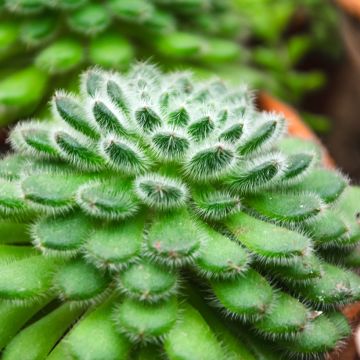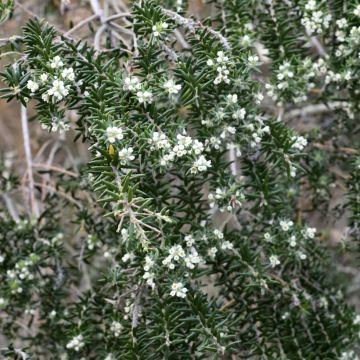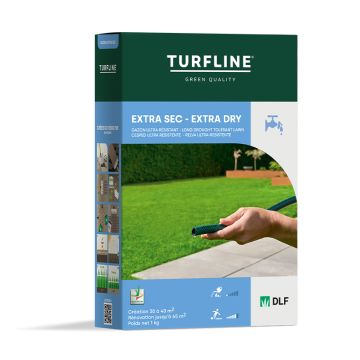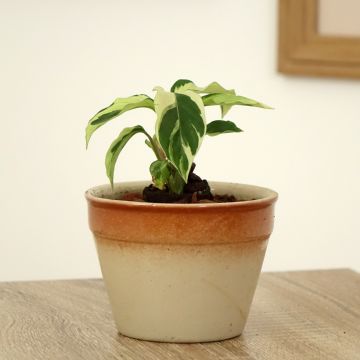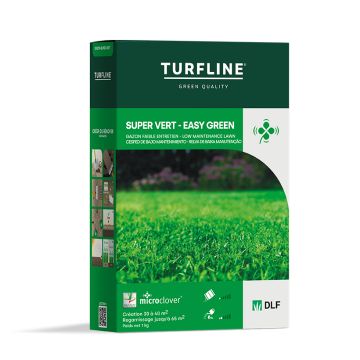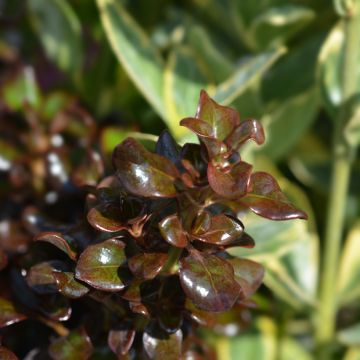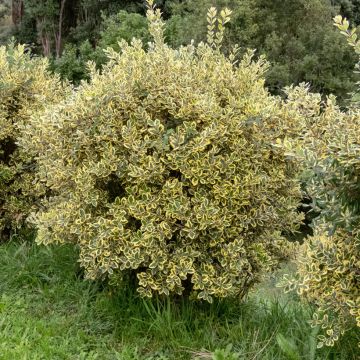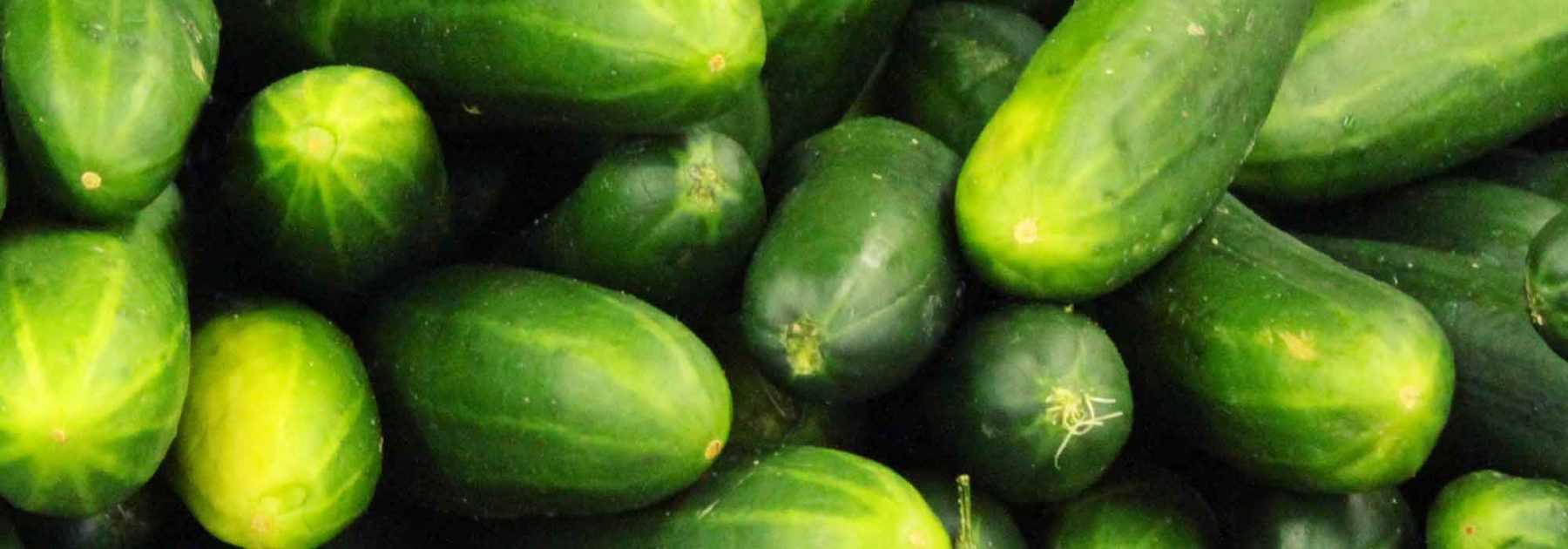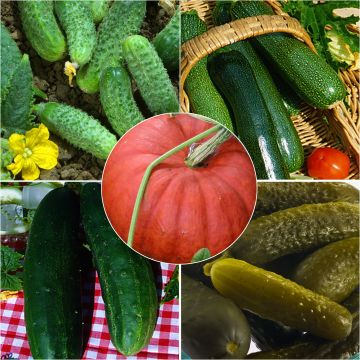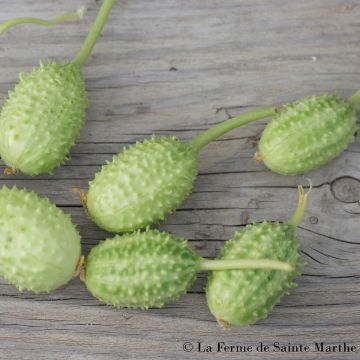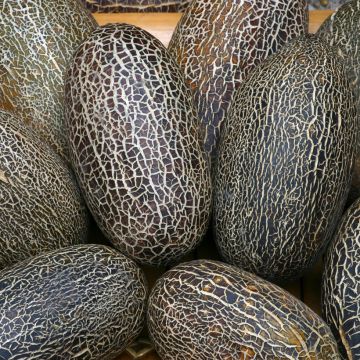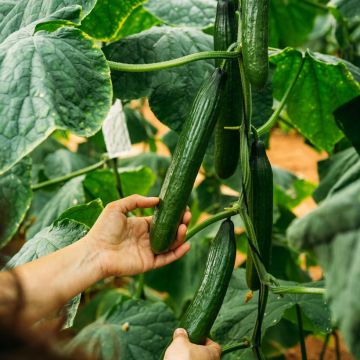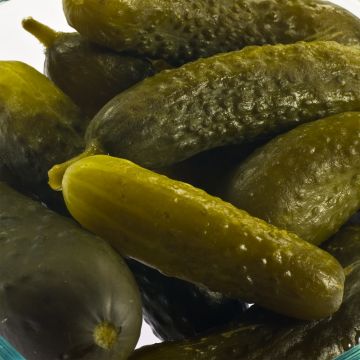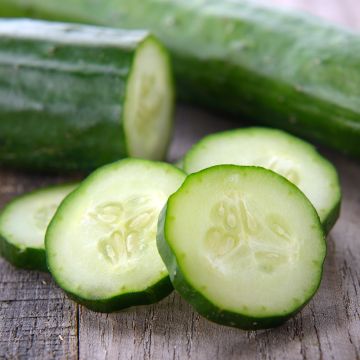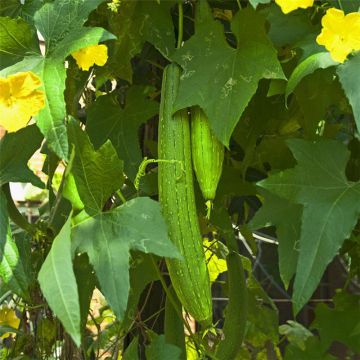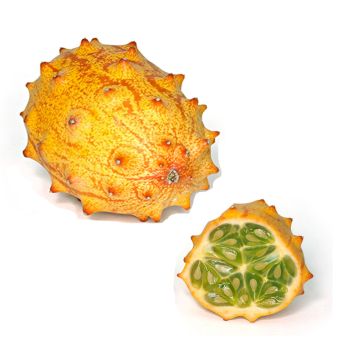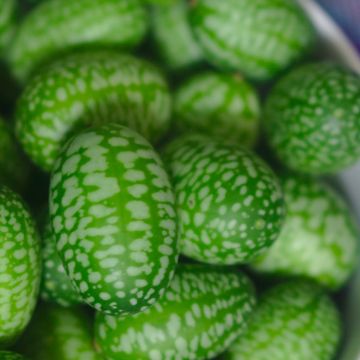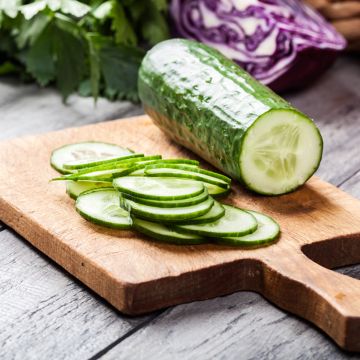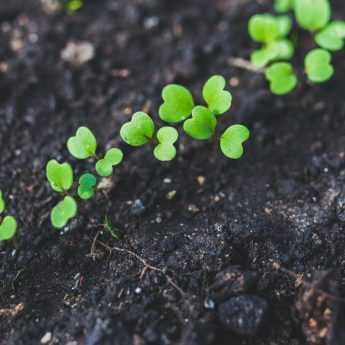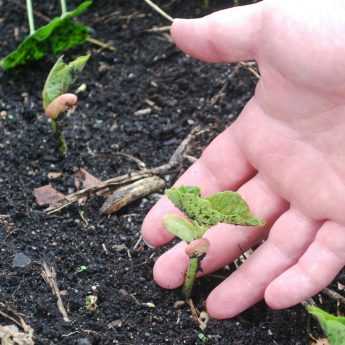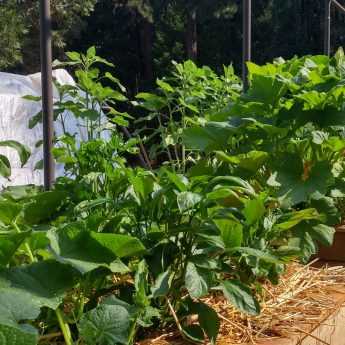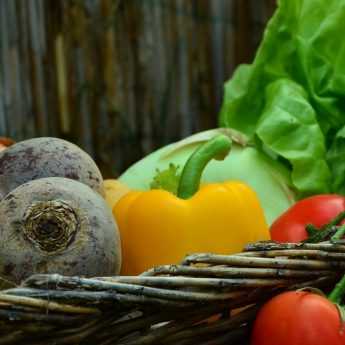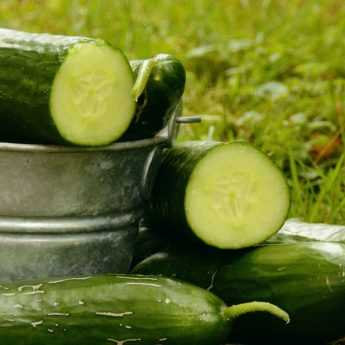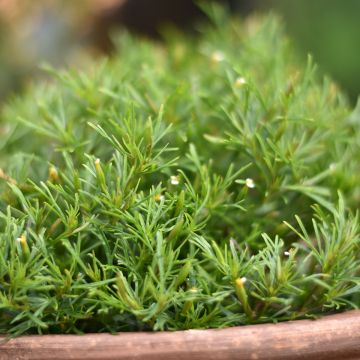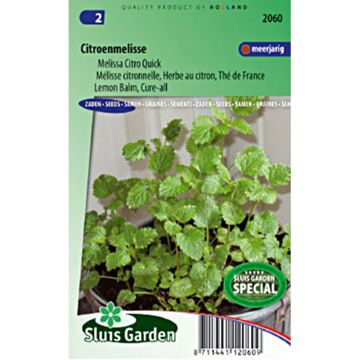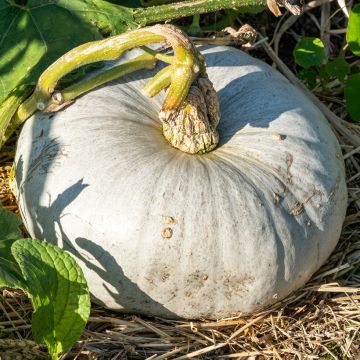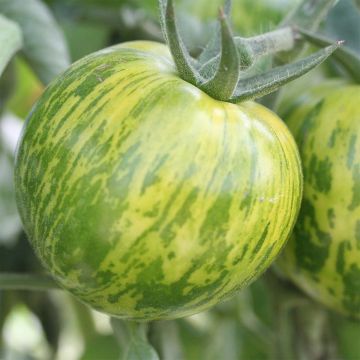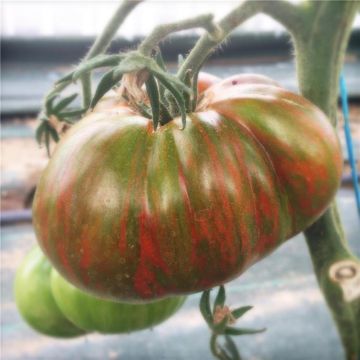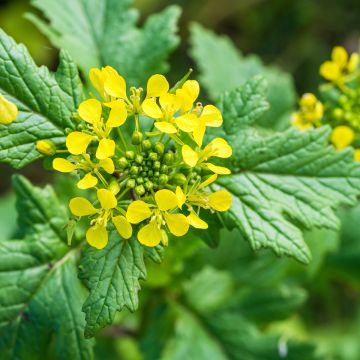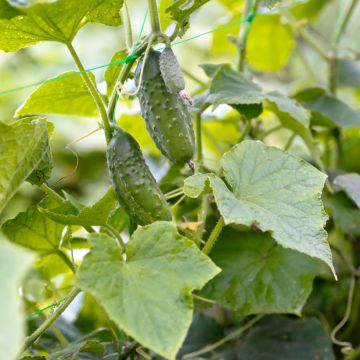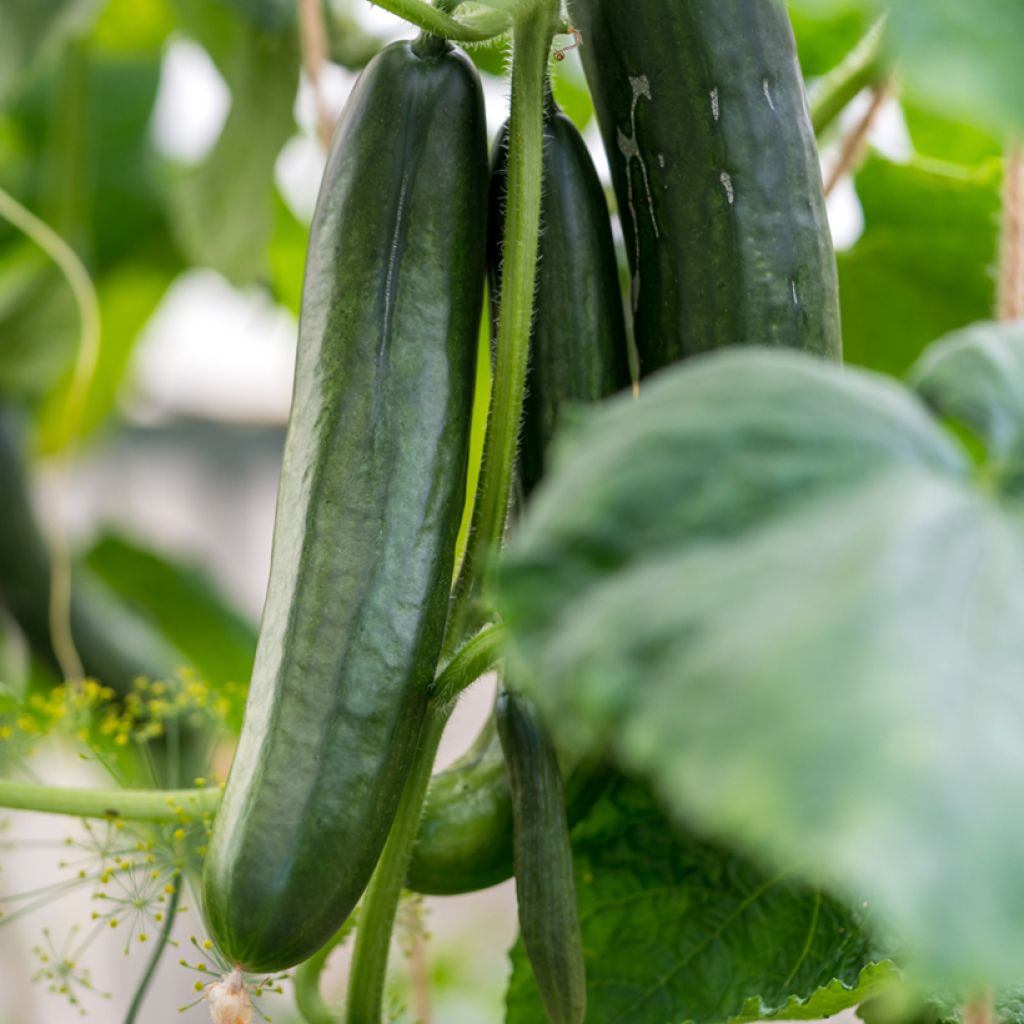

Cucumber Byblos - Cucumis sativus
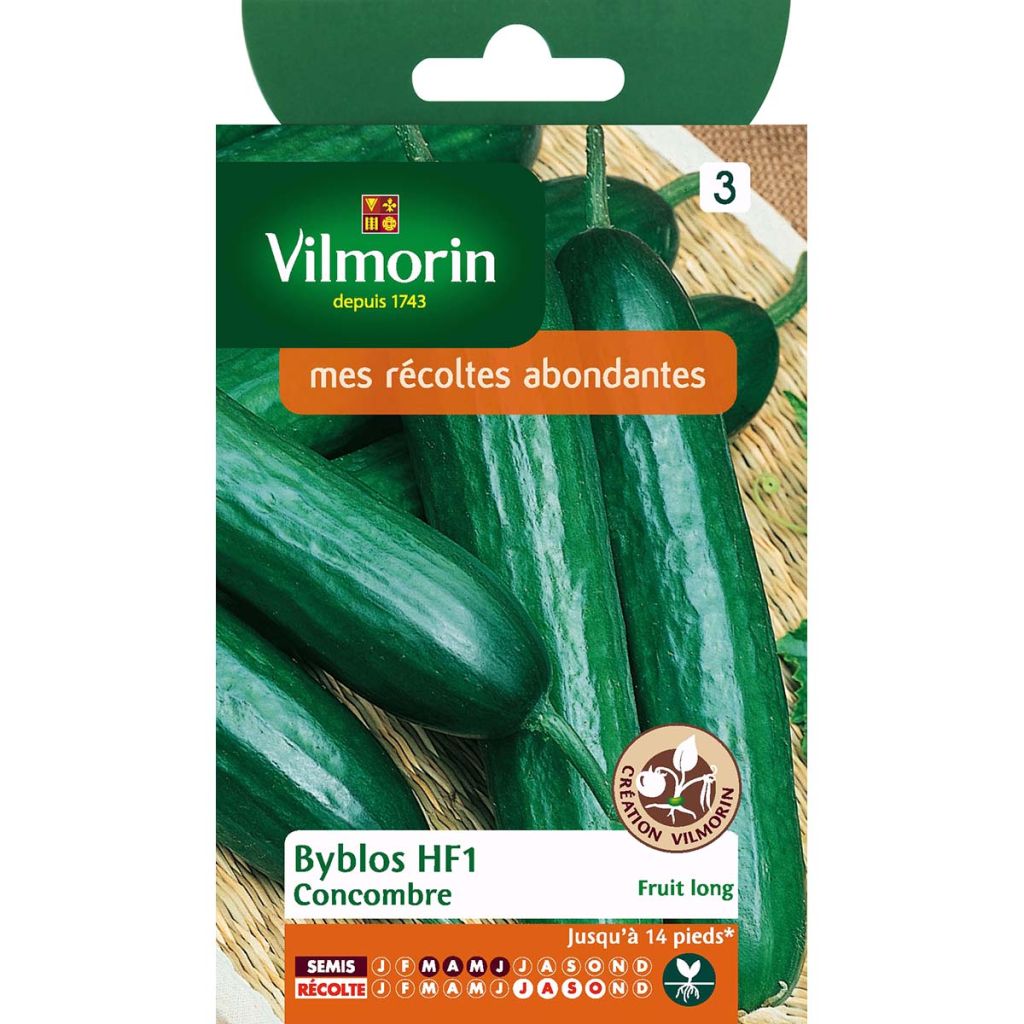

Cucumber Byblos - Cucumis sativus
Cucumber Byblos - Cucumis sativus
Cucumis sativus Byblos
Cucumber
Why not try an alternative variety in stock?
View all →This plant carries a 6 months recovery warranty
More information
We guarantee the quality of our plants for a full growing cycle, and will replace at our expense any plant that fails to recover under normal climatic and planting conditions.
Seed-only orders are dispatched by sealed envelope. The delivery charge for seed-only orders is €3.90.

Description
The Byblos cucumber is a vigorous variety particularly well adapted to difficult conditions. It will produce smooth, fairly short fruits (15 to 16 cm (6in) long), dark green in color and of good taste quality. Sowing is done from March (under shelter) to June, for a harvest 3 months later. For small gardens, cucumbers can be trained on any type of mesh support, which also facilitates harvesting!
Cucumber is, along with tomato, one of the star vegetables of summer. Refreshing and low in calories, it can be enjoyed in a mixed salad or on its own, for example, with a yogurt, lemon, and dill sauce. There are two main types of cucumbers: "forcing" varieties, which are intended for greenhouse cultivation, and those that are suitable for outdoor cultivation. Cucumbers can be smooth or spiny, long or semi-long. In addition to these classic varieties, there are also more "exotic" cucumbers such as the Kenyan Cucumber or the Snake Cucumber, which are generally more heat-demanding.
Cucumbers prefer light, loose, moist, and humus-rich soils. They like sunny exposures and temperatures between 18 and 22°C (64.4 and 71.6°F). They are quite water-hungry vegetables that need regular watering.
Harvest: Cucumbers should be harvested when they have reached their final size, before their color turns yellow. Be careful: overripe fruits become bitter. Remember to harvest regularly to encourage the formation of new fruits. Harvesting takes place approximately 3 months after sowing, from June to September.
Storage: Cucumbers can be stored in the refrigerator for several days. To enjoy your harvest for longer, you can also preserve them in jars through lacto-fermentation or in vinegar.
Gardener's tip: Like all cucurbits, cucumbers can be prone to powdery mildew: a white fuzz appears on the foliage. It is advisable to remove heavily affected leaves and spray with wettable sulfur every 2 weeks. As a preventive measure, avoid watering the foliage and ensure good ventilation in your greenhouse if growing under shelter. Spraying with a horsetail decoction can also be done to strengthen foliage resistance.
Cucumbers appreciate the company of lettuces and beans. Conversely, avoid placing them next to potatoes and tomatoes.
Harvest
Plant habit
Foliage
Botanical data
Cucumis
sativus
Byblos
Cucurbitaceae
Cucumber
Cultivar or hybrid
Annual
Other Cucumber seeds
View all →Planting and care
Cucumber sowing:
Cucumber germination occurs at a temperature between 16°C and 35°C. Germination generally takes 8 to 10 days at these temperatures. Sowing is done under cover in March/April (indoors, in a greenhouse, or on a hotbed) and in open ground from mid-May to June, when the soil is sufficiently warmed up and the risk of frost has passed. To spread out the harvest, you can stagger your sowings, every 15 days for example.
Sowing under cover: Fill pots (or trays with drainage holes) with special sowing compost and plant 2 or 3 seeds per pot. Water with a very fine spray. When the two true leaves appear, thin out to keep only one plant per pot. Depending on the sowing date, you can either transplant them into the open ground if the soil is warm enough, or keep one plant in each pot until temperatures are higher. Make sure the substrate remains moist but not waterlogged and keep it at a mild temperature. When transplanting into the open ground, allow for a spacing of 1m (3ft) all around if the crop is grown flat or 1m (3ft) between rows and 50cm (20in) along the row if the crop is trained.
Sowing in open ground: Stretch a cord and make furrows, spacing the rows 1m (3ft) apart. Sow in small holes (2 to 3 seeds in each hole). On the row, the holes will be spaced 1m (3ft) apart if the crop is grown flat or 50cm (20in) apart if the crop is trained. Cover with fine soil and lightly firm with the back of a rake. Water with a fine spray to keep the soil moist. When the plants have 2 to 3 leaves, thin out to keep only one plant.
Cucumber cultivation:
Cucumber is a fairly demanding vegetable that requires rich soil. It is advisable to add mature compost (around 3kg per m²) in autumn, by scratching it into the soil to a depth of 5cm (2in), after having loosened the soil, as is necessary for any vegetable crop. It thrives in neutral soil (pH 7) but will also do well in slightly acidic or alkaline soil (pH between 5.5 and 7.5).
Cucumber can be grown flat, but to save space and promote production, don't hesitate to exploit its climbing nature by training it: on a frame covered with wire mesh, inclined at 45%, it will provide beneficial shade for lettuces, or even in a teepee to add some whimsy to the vegetable garden.
When the plants are trained vertically, the crop is grown on a single stem that is pinched out at a maximum height of 2.5m (8ft). When grown flat, pinch out above the second leaf to obtain two stems, which will be pinched out above the 4th leaf. The final pruning involves cutting back to one leaf above each formed fruit.
Plan for 2 or 3 hoeings and mulch at the beginning of summer to maintain soil moisture.
Seedlings
Care
Intended location
Planting & care advice
-
, onOrder confirmed
Reply from on Promesse de fleurs
Vegetable seeds
Haven't found what you were looking for?
Hardiness is the lowest winter temperature a plant can endure without suffering serious damage or even dying. However, hardiness is affected by location (a sheltered area, such as a patio), protection (winter cover) and soil type (hardiness is improved by well-drained soil).

Photo Sharing Terms & Conditions
In order to encourage gardeners to interact and share their experiences, Promesse de fleurs offers various media enabling content to be uploaded onto its Site - in particular via the ‘Photo sharing’ module.
The User agrees to refrain from:
- Posting any content that is illegal, prejudicial, insulting, racist, inciteful to hatred, revisionist, contrary to public decency, that infringes on privacy or on the privacy rights of third parties, in particular the publicity rights of persons and goods, intellectual property rights, or the right to privacy.
- Submitting content on behalf of a third party;
- Impersonate the identity of a third party and/or publish any personal information about a third party;
In general, the User undertakes to refrain from any unethical behaviour.
All Content (in particular text, comments, files, images, photos, videos, creative works, etc.), which may be subject to property or intellectual property rights, image or other private rights, shall remain the property of the User, subject to the limited rights granted by the terms of the licence granted by Promesse de fleurs as stated below. Users are at liberty to publish or not to publish such Content on the Site, notably via the ‘Photo Sharing’ facility, and accept that this Content shall be made public and freely accessible, notably on the Internet.
Users further acknowledge, undertake to have ,and guarantee that they hold all necessary rights and permissions to publish such material on the Site, in particular with regard to the legislation in force pertaining to any privacy, property, intellectual property, image, or contractual rights, or rights of any other nature. By publishing such Content on the Site, Users acknowledge accepting full liability as publishers of the Content within the meaning of the law, and grant Promesse de fleurs, free of charge, an inclusive, worldwide licence for the said Content for the entire duration of its publication, including all reproduction, representation, up/downloading, displaying, performing, transmission, and storage rights.
Users also grant permission for their name to be linked to the Content and accept that this link may not always be made available.
By engaging in posting material, Users consent to their Content becoming automatically accessible on the Internet, in particular on other sites and/or blogs and/or web pages of the Promesse de fleurs site, including in particular social pages and the Promesse de fleurs catalogue.
Users may secure the removal of entrusted content free of charge by issuing a simple request via our contact form.

































